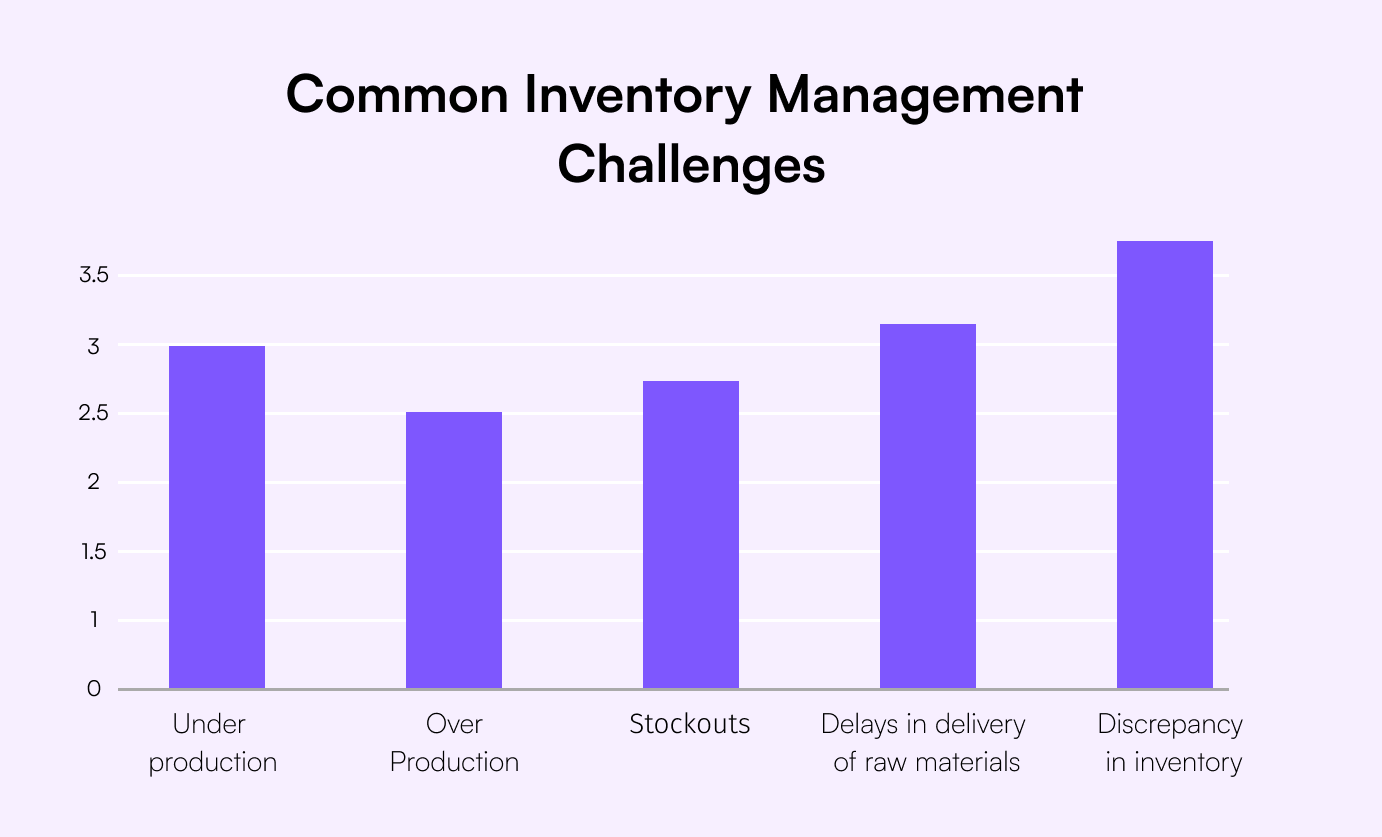Table of content
The retail sector is accustomed to razor-thin margins and serious competition, but there is no bigger concern than inventory management. Overstocking, stockouts, and inventory shrinkage cost businesses around the world approximately $1.8 trillion. The impact of manual inventory tracking can be seen in the form of delayed orders and inconvenience for customers, which comes as a big blow to retailers.
In order to meet customer demands, you always need to have enough stock in your inventory, and this is only possible with a comprehensive inventory management system.
By providing additional capabilities to monitor and control stock levels, the buzzworthy generative AI technology is now allowing retailers to offer enhanced customer experiences.
This post covers everything you need to know about the application of generative AI to manage stock levels in retail.
Why Retailers Should Embrace Generative AI
Even though poor inventory management directly affects profitability, a shocking 43% of small businesses still do not manage their inventory even today. This means that when an order comes in, 34% of businesses end up selling products that aren’t available in their inventory. As a result, customers face significant delays in shipment, and the business loses its chances of getting any positive reviews.
Utilizing generative AI for supply chain optimization means you can solve longstanding inventory problems like stockouts, overstocking, and shrinkage. A typical retail supply chain comprises the following processes:
- Procurement
- Production
- Distribution
- Customer Service
The capabilities of AI, which extend beyond data processing, become particularly useful in retail as it can predict future trends and analyze large amounts of data in real-time. By incorporating generative AI in retail, you can track the quantity, location, and status of raw materials, products being manufactured, and finished goods.
Sharper Decision-Making
Utilizing generative AI for inventory management, you can get real-time insights into your stock levels in different locations and manage them effectively. Unlike manual inventory management, AI can factor in numerous variables like lead times, demand patterns, seasonality, carrying costs, and the risk of obsolete inventory. It also allows you to optimize your inventory to make products available when they are needed, and avoid overstocking at the same time.
Boost Customer Satisfaction
When your customers are able to find the right product in your stock, you get a hundred percent satisfaction rate. But when they don’t, it means you have simply lost a valuable lead. With the help of generative AI, you can create exceptional shopping experiences for your customers and provide them with more than just what they are looking for.
By analyzing their searches and preferences along with supply and demand metrics, generative AI enables your business to exceed customer expectations. Not only that, but the availability of hot-selling products in your stock means you have a higher chance of gaining customer loyalty.
Cost Savings and Efficiency Gains
Before AI, inventory management was based on hit and trial. You had to rely on guesswork for ordering inventory items. Sometimes it worked, and sometimes you ended up having extra items on your shelves. However, generative AI has now enhanced the accuracy of inventory management by a significant margin. You can order just the right quantity of items at the right time to save both time and money.

Considering the high efficiency of AI, you can cut down on costs in terms of storage, wastage, and higher sales. All this is possible because generative AI allows you to forecast how much is needed, and sell faster so you do not have to store items in your warehouses for longer periods of time. Looking at the small margins retailers have to play with, this kind of cost-effectiveness is what everyone needs. Instead of wasting resources on overstocking, your business can spend more on innovation and growth.
Real-world Applications of Generative AI in Supply Chain Management
While AI offers so many benefits, it’s no surprise that brands around the world have incorporated generative AI into their supply chain. The following are some notable examples of real-world applications of generative AI:
Walmart
The secret behind the popularity of the retail giant Walmart is its use of generative AI for selecting suppliers and managing risks. By employing generative AI, Walmart is able to analyze different factors like geographical locations, financial standing, and supplier performance to make the best business decisions. The aim is to partner with an enhanced supplier base and eliminate loopholes in the supply chain.
Procter & Gamble (P&G)
The case is quite similar at Procter & Gamble. The renowned brand utilized generative AI for demand forecasting, whereby historical data and variables such as market trends, weather, and more are considered to predict the demand for each product. With the help of AI, P&G is able to enhance demand forecasting, reduce costs, and improve its overall inventory performance.
DHL
When it comes to logistics, you need to have your delivery routes planned out to extract maximum business value. The global logistics service provider, DHL, understands this and utilizes generative AI for resource allocation and route optimization. With AI working its magic, DHL can adjust its delivery routes dynamically. In this case, generative AI factors in real-time data such as weather, traffic conditions, transit times, and fuel requirements.
Flexport
Similarly, Flexport has also integrated generative AI to benefit from real-time supply chain visibility and optimization. Techniques like predictive analytics and demand forecasting allow the logistics platform to identify potential disruptions in freight routes and find the best possible solutions well before time.
Llamasoft
Apart from the key players that have an active role in supply chains, there are also analytical entities that benefit from generative AI. One such example is Llamasoft, which has incorporated generative AI to dry-run different supply chain scenarios and allow companies to make better decisions. Using generative AI analytics, businesses are able to identify loopholes and optimize their supply chain effectively.
How Generative AI Transforms Planning in Supply Chains
With all its analytical power, it’s not hard to guess that AI helps improve the planning and scheduling processes of supply chains. This is made possible by considering variables like production capacity, resource availability, order priority, and the customers themselves.
Considering these factors, generative AI can lay out complete production plans that include schedules, sequences, and resources. The ability of AI to analyze multiple variables simultaneously means that production plans are free of loopholes and ensure maximum production efficiency.
Example
One example of applying generative AI to improve demand forecasting can be seen in biotech companies, which use generative AI tools to get useful insights for production planning. For instance, the company can simulate scenarios where they use specific chemicals to develop their products and assess the impact it has on the global market. In fact, generative AI is now advanced enough to recommend courses of action in case the company’s own ideas go wrong. When it comes to risk management, AI is second to none.
Empower Sourcing Strategies with Generative AI
Once you have your supply chain planned out, the next step is to select the right suppliers. Fortunately for modern retailers, generative AI can assist and improve the supplier selection process with its analytical power. It can analyze supplier performance, pricing, associated risks, capabilities, and rankings to help you make informed decisions.
That’s not all, a leading US retailer even developed their own generative AI-based bots to negotiate purchasing terms and costs with vendors. Not only does it allow them to get the job done in a shorter amount of time, but it also helps reduce costs. If you think about it, generative AI has taken all the complexity out of the supplier selection process. It’s no surprise that 75% of the vendors prefer to negotiate with the bots instead of humans at the retail company.
Want to Apply Generative AI to Your Supply Chain?
Get in touch with shopdev’s AI/ML Developers Today!
Accelerate Production with Generative AI
The good news does not stop there. Generative AI can also assist retailers in speeding up their production process. Whether you are considering designing new parts for your production line or making your products more durable, generative AI can analyze numerous designs to suggest the ideal way forward.
Accelerating and improving production has obvious advantages in the retail environment. For this reason, businesses are training generative AI models on their datasets to achieve higher levels of productivity and efficiency. Preventive maintenance, another technique of generative AI, helps identify areas that are likely to fail or malfunction in your production line, hence allowing you to improve overall equipment effectiveness (OEE).
A leading manufacturer in Europe has incorporated generative AI to automate its production line. With the help of AI-based factory automation and product lifecycle management, the company is able to achieve more in less time. It has even improved its production cycle by employing automated inspection with AI.
Logistics Revolution: How Generative AI Optimizes Movement
After manufacturing your products, the next question is how to move the stocks to different warehouses and outlets. But you can rest assured that generative AI can help you in this step as well. Generative AI can optimize your logistics network by processing data points like transport links, demand patterns, and warehouse locations. This allows AI to create the most efficient logistics configuration with lower delivery times and costs.
Speaking of logistics and route selection, it's worth mentioning that one of the biggest logistics service providers in the US utilizes a proprietary AI platform for optimizing its supply chain. This includes optimizing delivery routes, warehouse selection, and improving productivity by 30%. Moreover, generative AI also allows you to cut down on operational costs while allowing you to customize your logistics process like never before.
Optimize Your Logistics with Generative AI
Connect with shopdev’s AI/ML Developers Today!
Strategies for Implementing Generative AI in Supply Chains
With all its powerful applications and benefits, generative AI is still not tailor-made for your specific business needs. As the implementation varies from one use case to another, you need to ensure that your AI solution integrates seamlessly with your existing applications. In some cases, companies have to re-engineer some of their existing processes to enable the AI solution to fit in.
Here’s how you can implement generative AI in your supply chain:
- Define what you want to achieve by implementing generative AI in your supply chain. This will allow you to select the right AI models to work with.
- Ensure that your data collection process is automated so that the AI algorithms can access the latest information
- Process the data to be fed to the AI and machine learning algorithms
- Identify high-impact use cases to create a synchronized ecosystem of traditional and modern business processes
- Implement generative AI to improve internal collaboration and coordination in your organization
- Identify the functionality and skill required for specific tasks and improve productivity
- Incorporate pilot initiatives to reduce risks and develop scalable processes
Implement Generative AI to Optimize Your Inventory
Talk to shopdev’s AI/ML Developers Today!
Overcome Challenges and Maximize Generative AI’s Potential
Now that we have discussed the benefits of generative AI for optimizing supply chains, let’s address some of the implementation challenges.
- Generative AI models work best with high-quality data inputs. So the most obvious challenge is data availability and quality.
- Training generative AI models is a time-consuming and costly process as it requires expertise and computational power.
- Supply chain decisions require transparency. It’s often difficult to interpret and explain to stakeholders how generative AI has reached the said results.
- Generating synthetic data based on assumptions to simulate supply chain scenarios can lead to legal and ethical challenges.
With that being said, the retail industry continuously faces challenges in one form or another. While the implementation of generative AI inventory management may cost you more than manual inventory management, the results are also that much better. At the end of the day, your best bet is to have AI and human intelligence working together in perfect harmony.
Key Takeaways
With technological advancements transforming inventory management, the competitive retail industry is looking for the best AI solutions. Leveraging generative AI for supply chain optimization allows retailers to achieve higher efficiency and also makes room for innovation. With accelerated operations and enhanced decision-making, business owners are able to identify and work on hidden weaknesses that have a significant impact on their customer base.




